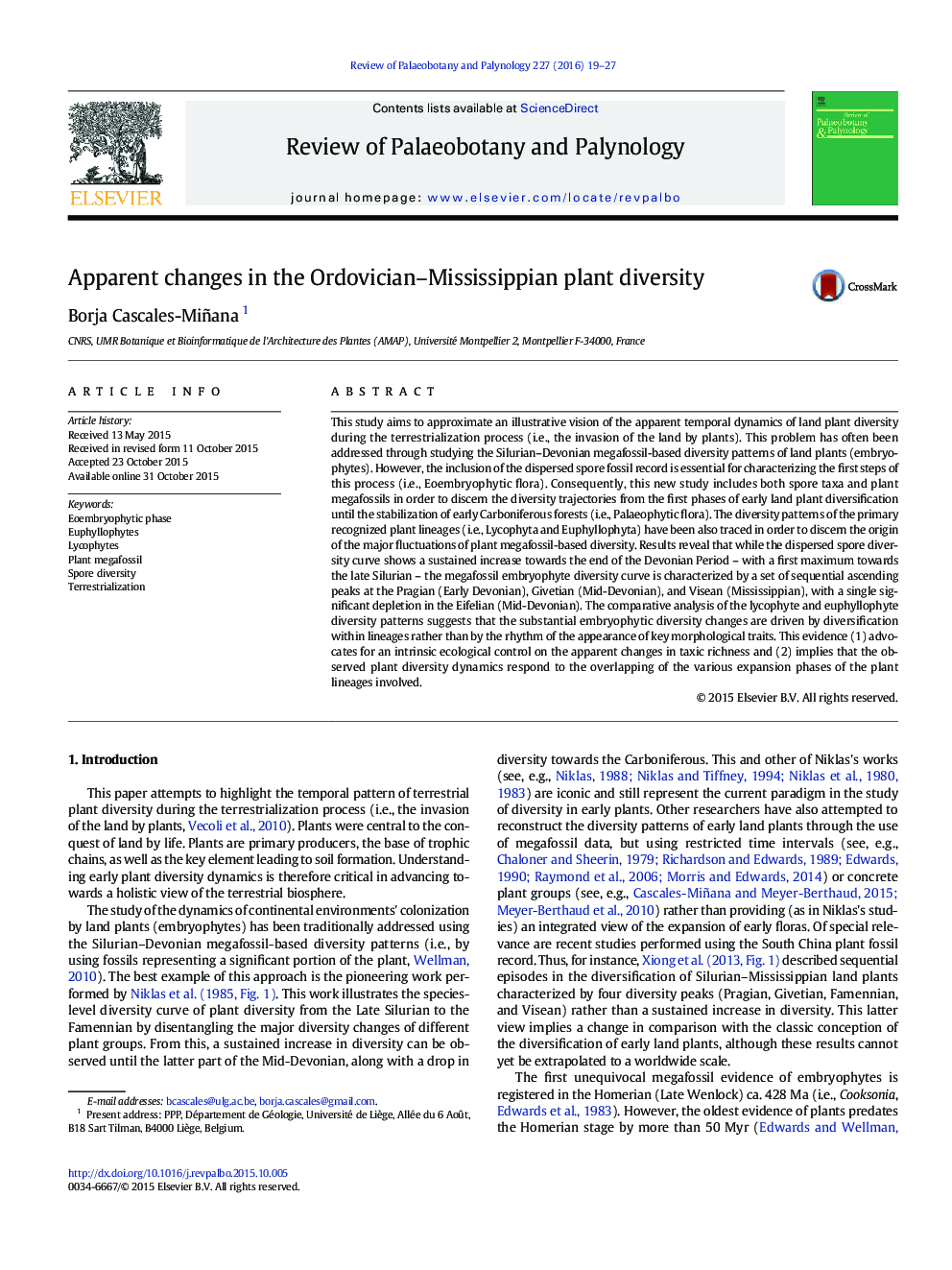| کد مقاله | کد نشریه | سال انتشار | مقاله انگلیسی | نسخه تمام متن |
|---|---|---|---|---|
| 4750116 | 1642470 | 2016 | 9 صفحه PDF | دانلود رایگان |

• Ordovician–Mississippian fossil-based plant diversity is analyzed.
• Spore diversity trajectory responds to a three-phase diversification model.
• Macrofossil-based diversity pattern is controlled by diversification within lineages.
• The new diversity patterns suggest particular dynamics in northeastern Gondwana.
• Diversity depletions appear neither at the end-Ordovician nor the end-Devonian.
This study aims to approximate an illustrative vision of the apparent temporal dynamics of land plant diversity during the terrestrialization process (i.e., the invasion of the land by plants). This problem has often been addressed through studying the Silurian–Devonian megafossil-based diversity patterns of land plants (embryophytes). However, the inclusion of the dispersed spore fossil record is essential for characterizing the first steps of this process (i.e., Eoembryophytic flora). Consequently, this new study includes both spore taxa and plant megafossils in order to discern the diversity trajectories from the first phases of early land plant diversification until the stabilization of early Carboniferous forests (i.e., Palaeophytic flora). The diversity patterns of the primary recognized plant lineages (i.e., Lycophyta and Euphyllophyta) have been also traced in order to discern the origin of the major fluctuations of plant megafossil-based diversity. Results reveal that while the dispersed spore diversity curve shows a sustained increase towards the end of the Devonian Period – with a first maximum towards the late Silurian – the megafossil embryophyte diversity curve is characterized by a set of sequential ascending peaks at the Pragian (Early Devonian), Givetian (Mid-Devonian), and Visean (Mississippian), with a single significant depletion in the Eifelian (Mid-Devonian). The comparative analysis of the lycophyte and euphyllophyte diversity patterns suggests that the substantial embryophytic diversity changes are driven by diversification within lineages rather than by the rhythm of the appearance of key morphological traits. This evidence (1) advocates for an intrinsic ecological control on the apparent changes in taxic richness and (2) implies that the observed plant diversity dynamics respond to the overlapping of the various expansion phases of the plant lineages involved.
Journal: Review of Palaeobotany and Palynology - Volume 227, April 2016, Pages 19–27